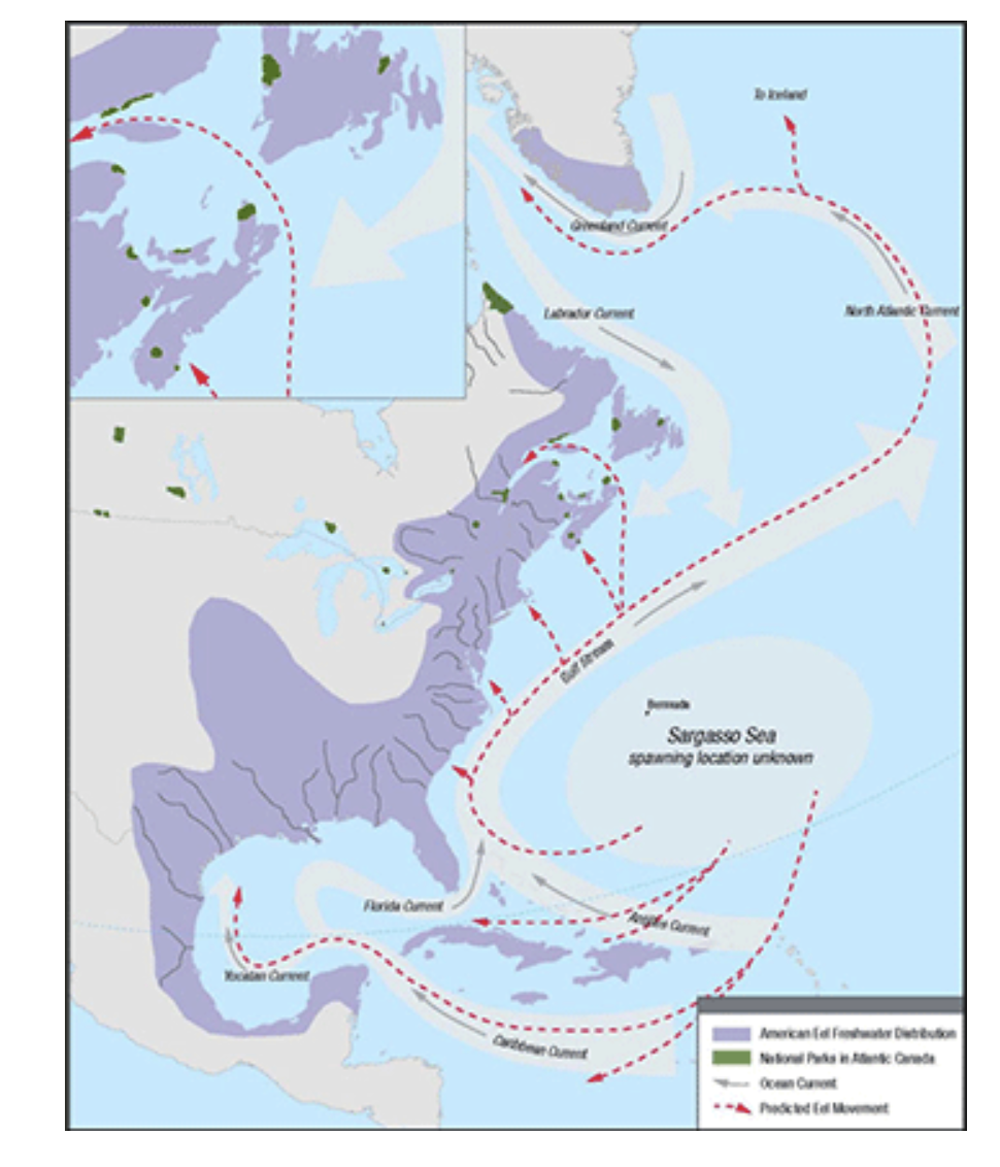


While many folks are familiar with the annual return of blueback herring and alewives to the coastal rivers and streams of New England, there’s another aquatic migrant that deserves attention—one whose journey from sea to freshwater and back is no less remarkable than that of the aforementioned herring.
I’m talking about elvers, also known as glass eels. Elvers are juvenile American eels, and they enter the coastal waterways from Texas to Nova Scotia each spring after developing from eggs and then larvae carried by currents from the species’ spawning grounds in the Sargasso Sea. They are “catadromous” fish, spawning in saltwater and spending most of their lives in freshwater (although some eels remain in salt or brackish waters after arriving at the coast).
I had never seen elvers in the flesh until 2012. I had stopped at a local herring run in late March to see if any fish were entering the river, when I noticed some very small, worm-like creatures swimming near shore in the freshwater pond above dam. Knowing a bit about eels, I eventually recognized them as elvers, and the more I looked, the more elvers I saw!
Every minute or so, one of the 3-inch-long, flagellate-like animals would wriggle out of the herring run and disappear into the tea-colored pond. Some would immediately burrow into the mossy vegetation that grew on the rocks.
I returned the next day, intent on capturing a few of the critters with a dipnet and observing them in captivity. This proved difficult, however, as elvers turn out to be quite fast, not to mention slippery. This should come as no surprise to anyone familiar with adult American eels—perhaps the slimiest creatures on earth next to the hagfish.

The baby eels need to be elusive, as almost everything eats them, from heron to trout. Humans too, of course. Glass eels—so-called for their translucent bodies—command a huge price in Asia, where they are grown to maturity and sold as a delicacy. The high price of eels spawned a gold-rush fishery that eventually led to limits on their harvest in the U.S. Yet poaching remains a problem in some areas, as a pound of elvers can fetch up to $2,200. The majority of elvers are harvested in Maine, where a limited number of licenses are given to fishermen.
Aside from a gauntlet of predators, elvers must also contend with fish ladders and dams during their odyssey from the ocean to the freshwater rivers, ponds and lakes where most will mature. For whatever reason, a number of eels choose to remain in brackish and tidal areas along the coast, where they feast on a variety of detritus, and provide a source of food for striped bass and birds. Once the eels reach maturity—they can grow up to 4 feet long and a weight of 9 pounds—they return to the ocean and make their way back to the Sargasso Sea, where they die after spawning.
Knowing all of this, I was excited to see so many elvers in my local waters, and desired to know them better. After several unsuccessful attempts at netting the individual eels that happened to swim within range, I played a hunch and used my net to scoop up some of the aquatic plants at my feet. Eureeka! I hit the jackpot, as several elvers immediately wriggled out of the mossy vegetation, where they had been hiding. I placed them in a jar and observed them for a bit then returned them to the pond. After all, they’d been through quite enough already.

